|
Introduction
Much has been done in the way of studying the trends
of on-campus cheating. There have been thorough
examinations of those who cheat and the methods that
they employ. Significantly less research has been
done on cheating methods and trends in online
education. The recent emphasis on online student
authentication has generated a discussion about
academic integrity within the university distance
education community. The role of technology in
cheating, as well as cheating tendencies in online
courses, is beginning to be investigated.
Longitudinal research shows cheating, in general,
has been an ongoing problem within academia (McCabe,
Treviño, & Butterfield, 2001). With the advancement
of technology come both educational opportunities
and obstacles for students and faculty members.
Educational opportunities include distance education
programs that provide an alternative to the
traditional classroom for students needing
flexibility, and a seemingly endless supply of
resources and information. Educational obstacles are
found in the form of advanced electronic gadgets
that could double as cheating tools, the blurred
line between acceptable and unacceptable study
practices such as approved group study versus
unapproved collaboration, and the increasing
occurrence of cut-and-paste Internet plagiarism.
This paper discusses two studies done within the
University of
Texas System.
Researchers investigated the beliefs of faculty
members who teach both online and on-campus. These
experienced faculty members were asked to compare
opportunities for and the likelihood of student
cheating in online and on-campus courses, along with
the ability to implement each of three approaches to
encouraging academic integrity: the virtue,
prevention, and policing approaches (Hinman, 2002;
Olt 2002).
This research was done on behalf of the UT
TeleCampus (UTTC), the distance education utility
for the
University of
Texas System.
Launched in 1998, UTTC has facilitated more than
65,000 enrollments and has a course inventory that
contains approximately 330 courses (UT TeleCampus,
2008).
The proposed 2006 Higher Education Opportunity Act (Boehner,
2006), included a requirement that accreditors
assure that any institution offering distance
education programs has “processes by which it
establishes that the student who registers in a
distance education course or program is the same
student who participates, completes academic work
and receives academic credit.” This requirement
inspired the staff at UTTC to begin looking at ways
to encourage academic integrity within the courses
offered by the 15 campuses within the UT System via
UTTC. This effort was timely as the proposed
legislation was recently passed and will go into
effect in July 2010 (Epper, Gilcher, McNabb, &
Lokken, 2008).
Gallant proposes the following five categories of academic
dishonesty, stating that these “terms
transcend group boundaries and roles” (Gallant,
2008, p. 10):
1.
“Plagiarism—using another’s words or ideas without
appropriate attribution or without following
citation conventions;
2.
Fabrication—making up data, results, information, or
numbers, and recording and reporting them;
3.
Falsification—manipulating research, data, or results
to inaccurately portray information in reports
(research, financial, or other) or academic
assignments;
4.
Misrepresentation—falsely representing oneself,
efforts, or abilities; and,
5.
Misbehavior—acting in ways that are not overtly
misconduct but are counter to prevailing behavioral
expectations.”
It
is important to note that only one category,
Misrepresentation, is addressed if the emphasis of
an academic integrity effort is focused solely on
student authentication. Instead, UTTC staff members
wanted to consider the issue of academic integrity
and how to encourage it more broadly. This led them
to inquire about the beliefs of the faculty members
teaching online through UTTC, as well as a desire to
develop resources and recommendations for faculty
members wanting to integrate academic integrity
efforts within their curriculum.
Literature Survey
Academic Integrity in Higher Education
Bill Bowers conducted the first published
large-scale study on student cheating in 1964, and
reported that three-fourths of higher education
students engaged in cheating (McCabe et al., 2001).
Thirty years later, similar studies were conducted.
These later studies indicated no significant
increase in the amount of overall cheating (McCabe
et al., 2001; Brown & Emmet, 2001). The researchers
did identify increases in cheating on tests and
exams, but no significant differences in regards to
written assignments (McCabe et al., 2001).
One suggested reason for the long-term consistency in
self-reported cheating on written assignments is the
change in perception of plagiarism by students. For
example, many students today do not recognize
un-cited paraphrasing as plagiarism (McCabe et al.,
2001), nor may they recognize information taken from
the Internet as intellectual property needing to be
cited (Lee, 2003).
Another area in which the line between right and wrong has
been blurred in the minds of students is that of
collusion. This is indicated by the substantial
increase in self-reports of unpermitted
collaboration from 11% of students surveyed by
Bowers, to 49% in 1993 (McCabe, 2005).
Hinman (2005) reported that students typically fall into one
of three categories of behaviors and values. The
first group, students who never cheat, needs a
campus culture that supports their values. On the
opposite end of the spectrum are chronic cheaters,
for whom preventive measures should be in place.
These students require that a campus community be
ever vigilant in its attempts to prevent cheating
and catch cheaters. The third group, those who
occasionally cheat, are the students whose behavior
is most likely to be impacted by campus and faculty
efforts to encourage academic honesty. Hinman writes
that this group—students who sometimes cheat—are the
ones most likely to be affected by the ease with
which students can cheat with the aid of educational
technologies.
Technology and Academic Integrity
Technology and the Internet can both facilitate
cheating. Students taking online exams can benefit
from collaborating with others, access to resources,
and the ability to have someone take an assessment
on their behalf (Eplion & Keefe, 2007). Students
plagiarizing assignments can buy papers from paper
mills or get content for free from digital
libraries, online journals and reference materials,
or online news (Sterngold, 2004).
There is evidence that, although cheating is not on the rise,
cheating with technology is increasing. In 2005,
McCabe wrote that campus administrators had growing
concerns about Internet plagiarism. Only 10% of
students reported participating in cut-and-paste
Internet plagiarism in 1999 (McCabe, 2005). By 2005,
this number rose considerably to 41%.
Academic Integrity and Online Education
While many studies have been conducted to determine
the state of cheating in traditional courses, few
have focused solely on online classes. Many believe
that an online class lends itself more easily to
cheating due to the lack of face-to-face contact
between the students and instructor. Researchers
have indicated, however, that the reasons given for
cheating are not different for the two delivery
methods. Varvel (2005, p. 2) concluded, “no evidence
currently is found to support that a student is more
likely to cheat online.”
In
an effort to determine whether cheating is more
prevalent in online classes, as opposed to
on-campus, a study was performed in 2002 in which
796 undergraduate online students completed surveys
regarding their experience in their online courses.
The results of the survey showed that the level of
cheating in an online course was consistent with
that of an on-campus class during a single semester
(Grijalva, Nowell, & Kerkvliet, 2006). The
researchers’ conclusion supports Varvel when
stating, “as online education expands, there is no
reason to suspect that academic dishonesty will
become more common” (Grijalva, et al., 2006, p.
184).
On
the other hand, there is a shared perception among
many students and faculty members that it is easier
to cheat in an online environment than in an
on-campus class. In a recent study, both groups were
asked about the ease of cheating when learning
online. Results indicated that the majority of both
students and faculty members believed that an online
environment was more conducive to cheating.
Noteworthy, however, is that the majority of
students and faculty members surveyed had never been
involved in an online course. Of those who had taken
or taught an online course, the percentage that
believed it easier to cheat was reduced (Kennedy,
Nowak, Raghuraman, Thomas, & Davis, 2000).
The
Center for Academic Integrity (1999) in its report,
“Fundamental Values of Academic Integrity,” proposes
a definition of institutional academic integrity
that encompasses honesty, trust, fairness, respect,
and responsibility:
“An
academic community of integrity advances the quest
for truth and knowledge by requiring intellectual
and personal honesty in learning, teaching,
research, and service (p. 5); fosters a climate of
mutual trust, encourages the free exchange of ideas,
and enables all to reach their highest potential (p.
6); establishes clear standards, practices and
procedures and expects fairness in the interactions
of students, faculty and administrators (p. 7);
recognizes the participatory nature of the learning
process and honors and respects a wide range of
opinions and ideas (p. 8); and, upholds personal
accountability and depends upon action in the face
of wrongdoing” (p. 9).
A
useful approach for addressing academic integrity
was outlined by Hinman (2002) and applied to online
education by Olt (2002). This three-part effort
includes the policing, prevention, and virtue
approaches. The goal of the policing approach is to
catch and punish students engaging in academic
dishonesty. The prevention approach’s goal is to
limit opportunities for student cheating as well as
the pressure to cheat. The goal of the virtue
approach is to encourage students to strive for
academic excellence and integrity.
UTTC Research Study
Using the Center for Academic Integrity’s definition
of academic integrity and Hinman’s (2002) three-part
approach as a framework, this study presents the
results of an examination of the beliefs of faculty
members regarding academic integrity in online
courses, and ways in which faculty members have
successfully developed communities of integrity in
online courses. The questions were approached
through two research sub-projects, one quantitative
on faculty beliefs and one qualitative on ways to
develop communities of integrity.
The
research questions were as follows: (a) How do
faculty members perceive the differences between the
likelihood of and opportunities for students to
cheat in online courses as compared to on-campus
courses?; (b) How do faculty members perceive the
ease with which the policing, prevention, and virtue
approaches can be implemented in online courses as
compared to on-campus courses?; and (c) What are
ways in which faculty members are successfully
creating communities of integrity in online courses?
Faculty Member Beliefs
Methodology
Invitations to participate in a survey were sent to
256 faculty members who had taught or were teaching
online via UTTC. Seventy-six surveys, or about 30%,
were completed. The UTTC faculty survey investigated
faculty members’ beliefs about the behaviors of
undergraduate and graduate students in on-campus and
online courses. The questionnaire asked the UTTC
faculty members about the likelihood of UT System
students participating in academic dishonesty.
Faculty members were also asked to compare on-campus
and online courses in relation to: (a) the
likelihood that students will cheat; (b) the ease
with which students can cheat; and (c) the ability
to police cheating, prevent cheating, and create
communities in which students do not want to cheat
(the virtue approach).
Results
Overall, 83% of respondents had experience teaching
on-campus undergraduate courses and approximately
three-quarters had experience teaching graduate
courses on-campus. Participants’ experience teaching
on-campus is detailed in Figure 1. A majority of the
faculty members surveyed were very experienced
on-campus educators; about three-quarters reported
more than 10 semesters of experience teaching
undergraduates and 58% had more than 10 semesters of
experience teaching graduate students.
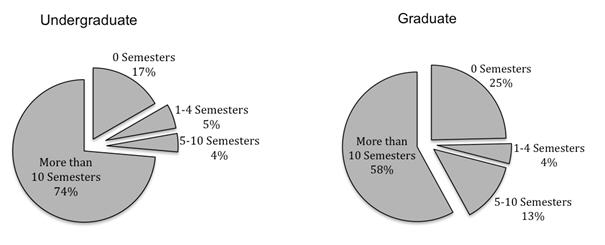 Figure 1. On-campus Teaching Experience of UTTC
Faculty Survey Participants
Figure 1. On-campus Teaching Experience of UTTC
Faculty Survey Participants
It
is important to note that, as all the survey
participants taught via UTTC, all had online
teaching experience. Specifically, 69% of the
faculty members surveyed had online teaching
experience with undergraduate courses. A smaller but
significant number—58%—of faculty members had the
same experience with graduate courses. Participants’
experience with online teaching is detailed in
Figure 2.
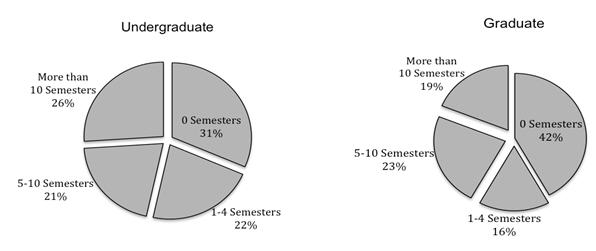
Figure 2. Online Teaching Experience of UTTC Faculty Survey
Participants
Outcomes
Whether the survey question was about the likelihood
of students cheating, the opportunities students
have to cheat, policing cheating, preventing
cheating, or creating communities averse to
cheating, most respondents did not believe that
there was a difference between on-campus and online
courses. Additionally, for every question, the
participants who did not believe that the
environments were the same were most likely to
believe that an on-campus environment is superior to
an online environment.
Beliefs regarding the frequency with which students in the UT
System engage in academic dishonesty.
The majority of the faculty members surveyed
believed that students within the UT System—studying
by any medium—engage in academic dishonesty at least
occasionally. More than 60% of the faculty members
surveyed agreed that graduate students cheat
occasionally. On the other hand, a majority of the
faculty members did not agree about their
perceptions of the frequency of cheating among
undergraduate students.
UTTC faculty members were significantly more likely
to believe that undergraduate students participate
in academic dishonesty than they were to believe the
same about graduate students. While 43% of the
faculty members believed that undergraduate students
cheat often or very often, only 6% believed the same
about graduate students. Responses to the question,
“How frequently do you believe students in the UT
System engage in academic dishonesty?” are detailed
in Figure 3.
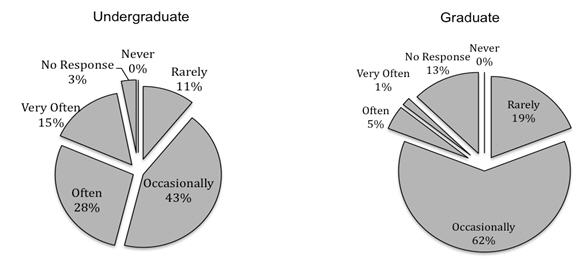
Figure 3. Faculty Member Beliefs Regarding the
Frequency with which Students in the UT System
Engage in Academic Dishonesty
Beliefs regarding opportunities students have to engage in
academic dishonesty.
Approximately one-half of the faculty members
surveyed believed that opportunities for
undergraduate students to cheat are equivalent in
on-campus and online courses, and those beliefs
varied little between those about undergraduate as
opposed to graduate students. Nevertheless, many
faculty members did not agree; about one-third
believed that, for undergraduate students, an online
course is most conducive to cheating. Specifics
regarding beliefs about opportunities to cheat in
both on-campus and online courses are shown in
Figure 4.
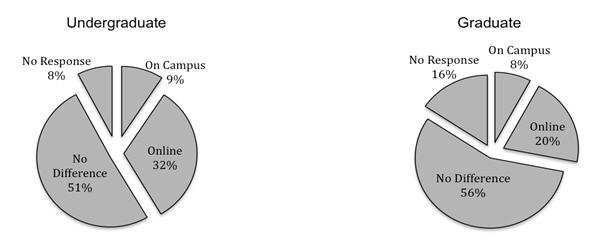
Figure 4. Faculty Member Beliefs Regarding the
Opportunities Students Have to Engage in
Academic
Dishonesty in Online and On-Campus Courses
Beliefs regarding the likelihood that students will engage in
academic dishonesty.
When asked about the possibility that students will
engage in academic dishonesty, 57% and 64% of
faculty members saw no difference between the
delivery methods, when teaching undergraduate and
graduate students respectively. Of the faculty
members who did not consider the two methods to be
equivalent, most believed online classes to be
inferior.
This is especially true of faculty perceptions of
undergraduate students; about one-quarter of the
faculty members believed that undergraduates are
most likely to cheat in an online course.
Information on faculty member beliefs regarding the
likelihood that students will cheat is shown in
Figure 5.
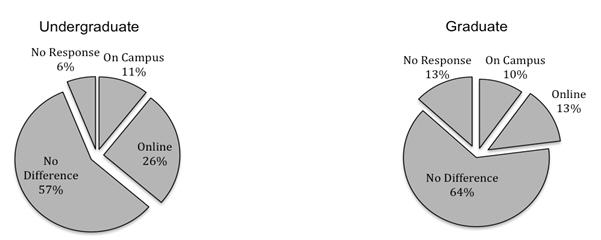
Figure 5. Faculty Member Beliefs Regarding the
Likelihood Students will Engage in Academic
Dishonesty in Online and On-Campus Courses
Beliefs regarding the ease with which academic
dishonesty can be identified (the policing approach).
Almost one-half of survey participants believed that
the ability to catch cheaters is the same in either
an on-campus or online course. Other faculty
members—34% for undergraduate and 24% for graduate
courses—thought an on-campus environment is a better venue in which
to identify cheating. A look at beliefs regarding
the effectiveness of the policing approach in
on-campus and online courses is shown in Figure 6.
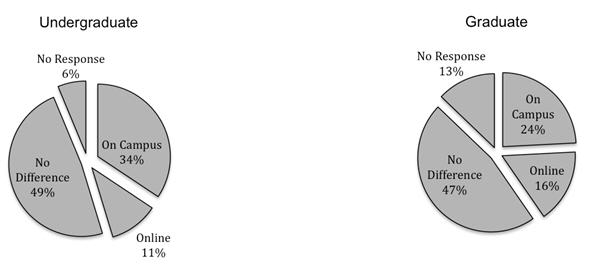
Figure 6. Faculty Member Beliefs Regarding the Ease
with which Academic Dishonesty can be Indentified
in Online and On-Campus Courses
Beliefs regarding the ease with which academic
dishonesty can be prevented (the prevention
approach).
Survey results regarding prevention of cheating are
in Figure 7. Approximately one-half of the faculty
members surveyed believed that it is as easy to
prevent cheating in an online course as it is to
prevent it on-campus. Nevertheless, approximately
one-third thought it was easier to prevent cheating
in an on-campus course.
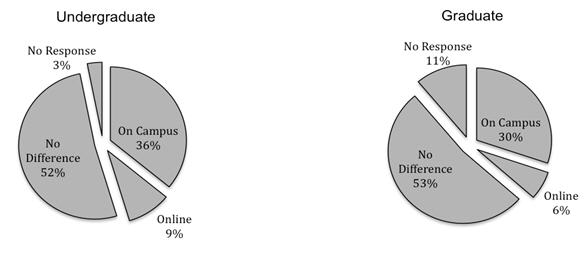
Figure 7. Faculty Member Beliefs Regarding the Ease
with which Academic Dishonesty can be Prevented
in Online and On-Campus Courses
Beliefs regarding the ease with which a community of
integrity can be created (the virtue approach). One-half of the faculty members believed that there is no difference between an
on-campus and online course when creating an
academic community of integrity in an undergraduate
course and slightly more had the same confidence
about the delivery methods when teaching graduate
courses. Nevertheless, a significant number—37%—felt
that an on-campus course is best for creating a
community of integrity with undergraduate students,
and 22% percent indicated the same belief about
graduate students. A look at beliefs regarding the
ability to create communities of integrity in
on-campus and online courses is shown in Figure 8.
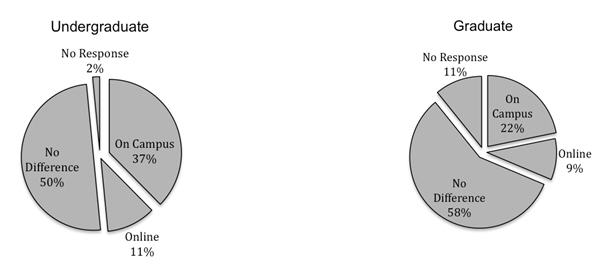
Figure 8.Faculty Member Beliefs Regarding the Ease
with which a Community of Integrity can be Created
in Online and On-Campus Courses
To summarize the responses to questions about the
policing, prevention, and virtue approaches, about
one-half of faculty member respondents thought that
any of the three approaches are equally likely to be
effective in either type of course, however a
significant number of faculty members had concerns
about online courses. This is especially true when
teaching undergraduate students; about one-third of
the faculty members believed that an on-campus
course is more effective in implementing any of the
three approaches with undergraduate students.
Developing Communities of Integrity
Methodology
Using the Center for Academic Integrity’s definition
of a community of integrity, a one-question survey
was developed in which participants were asked to
share an idea for creating a community of integrity
in an online course. This anonymous survey was
announced on listservs frequented by faculty and
staff members involved in online education.
Fifty-nine individuals responded. The research team
reviewed the responses from the online survey and
grouped like ideas together, forming six categories.
Two focus groups were held in which each group of
participants was asked to review half of the
categories and rank the ideas presented. The focus
group participants consisted of faculty and staff
members involved in online education. They
represented eight academic campuses and four medical
branches within the UT System.
Results
Input from the focus group discussions regarding the
presented ideas were analyzed for commonalities.
Three distinct themes emerged from the discussions
into which the ideas were grouped, namely design,
communication, and collaboration. The rankings of
the presented ideas were tallied and prioritized.
The twelve ideas with the highest ranking were
selected, with each of the three established themes
being represented.
Outcomes
Below is a summary of the focus group findings for
each of the three categories, along with the twelve
corresponding ideas generated.
Course, assignment, and assessment design.
Focus group participants believed that some
assignment and test designs lend themselves to
cheating more than others. In addition, a faculty
member can design tasks that challenge and interest
students, require team collaboration, and provide
opportunities for students to contribute on a
personal level, all of which facilitate student
honesty. Participants also believed that a clear
understanding of the grading criteria, in the form
of a rubric, helps students comprehend the level and
type of participation needed in order to succeed. In
other words, taking away the guesswork allows
students to focus more on learning and less on the
mystery of achieving the desired grade. Following
are the top responses within the area of design:
-
Incorporate critical thinking discussions into online
classes, allowing students to contribute their
experiences, successes, and problems pertaining to
the topic being discussed.
-
Have assignments and activities in which appropriate
sharing and collaboration is essential to
successful completion.
-
Foster a community of integrity by choosing authentic
learning tasks that require group cohesiveness and
effort. This includes posing authentic questions
for students; creating assignments that are
distinctive, individual, and non-duplicative, or
about what individual students self-identify as
their personal learning needs; and, helping
students turn their attention to exploring an
issue, rather than focusing on grades.
-
Provide rubrics, or detailed grading criteria, for all
assignments at the beginning of the course so that
learners can know and understand how they will be
scored.
Communications with students. Focus group participants identified the most ideas used to
create a community of academic integrity in the area
of communication, making it clear that communication
is an integral component in successfully creating
the community. The focus group participants viewed
successful communication to be the responsibility of
the faculty member, since most of the responses
within this category focus on information provided
by the faculty member to the students, rather than
two-way communication. The top ideas within the
communication category are:
-
Clearly state your expectations for the students as well
as what they should expect from you.
-
Include a statement in the syllabus encouraging honest
work, so that students can contribute their own
unique perspective to the class. This allows
students to understand that differing points of
view enhance the learning experience for everyone.
-
Develop a class honor code and ask students to commit to
it.
-
Provide a definition of academic integrity and cheating.
Clearly explain what is considered dishonest and
unacceptable behavior.
-
Create an awareness of campus policies that include
stating the academic honesty policy within the
online learning environment and discussing it in
the early stages of the course. It is also
important to provide a link to the campus website
on academic integrity.
-
Create an environment where opinions are valued and
grading is unbiased. This welcomes all ideas, and
encourages participation by dispelling fears of
giving an incorrect answer.
Collaboration between students.
While the role of collaboration was believed to be
significant in creating a community of academic
integrity, focus group participants found it to be
the most difficult on which to elaborate. Of the
twelve ideas presented for all three categories,
only two fit into the category of collaboration.
Participants viewed successful collaboration as
involving students as stakeholders in the process of
creating the desired community, as well as valuing
respect for others. The top ideas within the
collaboration category are:
-
At the start of the course, ask students for their input
on how to create a community of integrity. This
establishes the students as stakeholders in the
community through the process of its formation.
-
Require students to acknowledge and further each other’s
work. By respecting the contributions of others
and actively working to help others learn,
students develop a sense of team and ownership.
Discussion
The results of this study indicate that faculty
members do not see significant differences in online
and on-campus courses when it comes to academic
integrity. Additionally, the researchers identified
best practices for creating communities of integrity
in online courses, and found that they can be
developed in online classes through means very
similar to those for on-campus courses.
Faculty Member Beliefs Regarding Academic Integrity within
the UT System
The majority of the faculty members surveyed
believed that students within
the UT System engage in academic dishonesty at least
occasionally. Nearly half believed that
undergraduate students cheat either often or very
often. As can be seen in Figure 9, UTTC faculty
members were significantly more likely to believe
that undergraduate students participate in academic
dishonesty than they were to believe the same about
graduate students.
Hard, Conway and Moran found that faculty members'
beliefs about the frequency of student academic
misconduct, “were significantly closer to student
self-reports of academic misconduct” than were
estimated by students (Hard et al., p. 1074). If
UTTC faculty members are equally insightful
regarding their students, cheating by undergraduates
is a considerable problem in both online and
on-campus courses, and extra efforts should be made
to address undergraduate cheating within the UT
System.
Faculty Member Perceptions Regarding Academic Dishonesty in
Online and On-Campus Courses
Regardless of whether they were asked to consider
the opportunities for or the likelihood of cheating,
or the ability to successfully implement one of the
three suggested approaches to developing a community
of integrity (policing, prevention, or virtue) there
was remarkable consistency in the faculty member
responses.
The
most likely response by a faculty member was to
express a belief that there is no difference between
online and on-campus courses when it comes to
academic integrity. At least 50% of faculty members
expressed that belief for each of the five research
areas (likelihood of cheating, opportunities to
cheat, the policing approach, the prevention
approach, and the virtue approach).
Of the faculty members who did not believe online and
on-campus learning environments are equally
effective for creating communities of integrity,
most preferred on-campus courses, especially for
undergraduate students. This belief was consistent
across all issues investigated. Faculty members were
particularly likely to prefer an on-campus course
when implementing the virtue approach.

Figure 9. Comparison of Faculty Member Beliefs
Regarding the Frequency with which Undergraduate
and Graduate Students Engage in Academic Dishonesty
within the UT System
The
number of faculty members who prefer an online
course is small, but not insignificant. Further, in
each of the five research areas, at least 60% of
faculty members believe that an online course is as
effective or more effective than an on-campus course
when encouraging academic integrity.
As
this study only encompassed online educators, it is
difficult to know if the opinions of the faculty
members surveyed are reflective of the entire UT
System. There is some evidence that there are
correlations between experience with teaching online
and beliefs about cheating in online courses (Hard
et al., 2006; Kelley & Bonner, 2005). Additionally,
it is important to note that all the faculty members
surveyed taught via the UT TeleCampus and have
shared experiences such as faculty training, course
quality standards, instructional technologies, and
student and faculty member supports. Therefore, the
faculty members surveyed were a relatively
homogeneous group.
Researchers have detected a predictable cycle
regarding faculty members’ perceptions of cheating
and action taken by them. Hard, Conway, and Moran
(2006) found that faculty members who believe that
cheating is isolated are less likely to engage in
prevention or policing efforts, while Kelley and
Bonner (2005) found that faculty members who
perceive cheating to be pervasive are more likely to
view academic dishonesty to be a serious problem in
their class. If faculty member beliefs drive similar
actions within the UT System, it would indicate a
strong interest in and motivation to encourage
behaviors of integrity by students, especially in
undergraduate courses where the perceived level of
academic dishonesty is highest.
The
results of this study suggest that levels and types
of academic dishonesty are similar in an online
environment to that found on-campus, and that
successful efforts to encourage integrity are
similar regardless of whether the course is online
or on-campus. This may indicate that online
classrooms should be integrated into the campus
academic integrity program, rather than separate
programs being created specifically for online
courses.
Additionally, as campuses create policies and
procedures to encourage academic integrity in online
classes, the effectiveness of those efforts may be
undermined by differing opinions regarding cheating
in online classes between faculty members who have
taught online and faculty members and administrators
who do not have experience with online teaching.
This study found that faculty members engaged in
teaching online believed that academic dishonesty is
no different in online and on campus courses. Other
researchers have found that faculty members who do
not teach online believe academic dishonesty is more
likely to occur in an online course (Hard et al.,
2006; Kelley & Bonner, 2005).
There is evidence of awareness that faculty members
teaching online may have opinions about online
classrooms that differ from their peers and others.
When discussing the new student authentication
requirements for online courses, a representative of
the Department of Education noted that while “many
faculty members are confident that they know their
online students as well as or better than students
in their face-to-face classes,” it is important to,
“understand that the congressional delegations are
less clear about what happens in distance education
courses and they are concerned the online
environment provides greater opportunity for
fraudulent behavior” (Epper, et al., 2008). This
discrepancy in opinions is also reflected in studies
conducted within the UT system that found that
administrators are, “more concerned about
controlling academic honesty in Web-based courses
than in the traditional classroom” (Olsen & Hale,
2007).
The
most effective way to determine which of the
prevailing opinions regarding cheating in online
courses within the UT System is correct would be to
determine the cheating behaviors of students in
online classes as compared to on-campus. The
researchers recommend a study aimed at student
perceptions of cheating, in an attempt to verify the
differences, if any, in the degree of self-reported
cheating between online and on-campus courses.
Strategies for Creating Communities of Integrity in Online Courses
There is evidence that the design of an online
course can contribute to any of the three
approaches—policing, prevention, and virtue—and
facilitate academic honesty (Olt, 2002). Studies
also show that students want faculty members to
communicate expectations, focus on learning rather
than grades, and encourage the development of good
character in their classrooms (McCabe & Pavela,
2004). Additionally, research has shown that a
student who perceives that they have a positive
relationship with their instructor is not only more
likely to learn, they are also less likely to cheat
(Stearns, 2001).
The
findings of the UTTC study mirror conclusions from
other researchers (Olt, 2002; McCabe & Pavela,
2004). The three main areas of design,
communication, and collaboration have been shown in
previous studies to be influential in creating
communities of integrity in the classroom. These
same areas were identified as the driving forces
behind the classroom successes of the UTTC faculty
members, as they discussed and ranked the ideas
gleaned from the listserv survey when developing the
list of twelve strategies for creating a community
of integrity.
The
strategies generated in this study for creating an
environment of academic integrity within an online
class are not unique to an online environment but
rather are best practices that can be applied to
both online and on-campus environments. The way in
which assignments and assessments are designed,
students participate in class and interact with one
another, and honest and open communication is
encouraged are effective for both online and
on-campus classes. The researchers believe that the
methods and strategies developed for creating an
environment of academic integrity are useful for
either venue.
The
best practices generated in this study relate to the
area of virtue and creating an environment where
students will not want to teach. The researchers
recommend additional research be conducted to
generate similar best practice lists for the areas
of policing and prevention.
Conclusion
The
results of this study can be expressed with the old
saying: “as much as things change, they stay the
same.” The researchers found that online educators
within the UT System do not see significant
differences between online and on-campus courses
when it comes to academic dishonesty or efforts to
encourage academic integrity.
Additionally, the development of a list of best
practices to encourage communities of integrity in
online courses is a useful tool for faculty members
who are striving to develop learning environments
based on honesty, trust, fairness, respect, and
responsibility. Even though the recommended ways in
which to implement the twelve ideas were intended to
be unique to the online classroom, they are equally
useful in an on-campus course.
|









